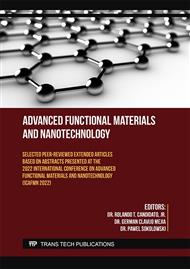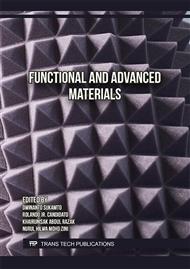p.89
p.97
p.105
p.113
p.125
p.133
p.141
p.169
p.179
Monte Carlo Simulation Study on the Depth-Dose Distribution of Thermoplastic Reinforced Composites for Potential Applications in External Beam Radiotherapy
Abstract:
External beam radiotherapy is a crucial method in treating cancer as it requires a high level of accuracy in patient positioning. Hence, commercial thermoplastic masks have a significant role during radiotherapy treatment as it is an efficient way of accurately positioning the patient without risking their safety and comfort. However, these commercial masks are expensive due to the use of costly compounds and additives, and several studies have concluded that commercial masks can significantly increase the surface dose. This study examined the effects of various thermoplastic reinforced composites for an alternative economic mask in terms of depth-dose distribution through Monte Carlo simulations in GEANT4 Application for Tomographic Emission (GATE). The simulations were varied by incident beams and their energies, material composition of the phantom, and varying thermoplastic reinforced composites. In general, the results indicated that PCL/PLA (polycaprolactone/polylactic acid), PLA/PU (polylactic acid/polyurethane), PCL/RH (polycaprolactone/rice husk), LDPE/PALF (low-density polyethylene/pineapple leaf fiber), and PP/PALF (polypropylene/pineapple leaf fiber) composites showed relatively accurate dose delivery in the target volume, which the slight difference will accumulate the 5% marginal error in treatment planning systems.
Info:
Periodical:
Pages:
141-167
Citation:
Online since:
October 2023
Price:
Сopyright:
© 2023 Trans Tech Publications Ltd. All Rights Reserved
Share:
Citation:



